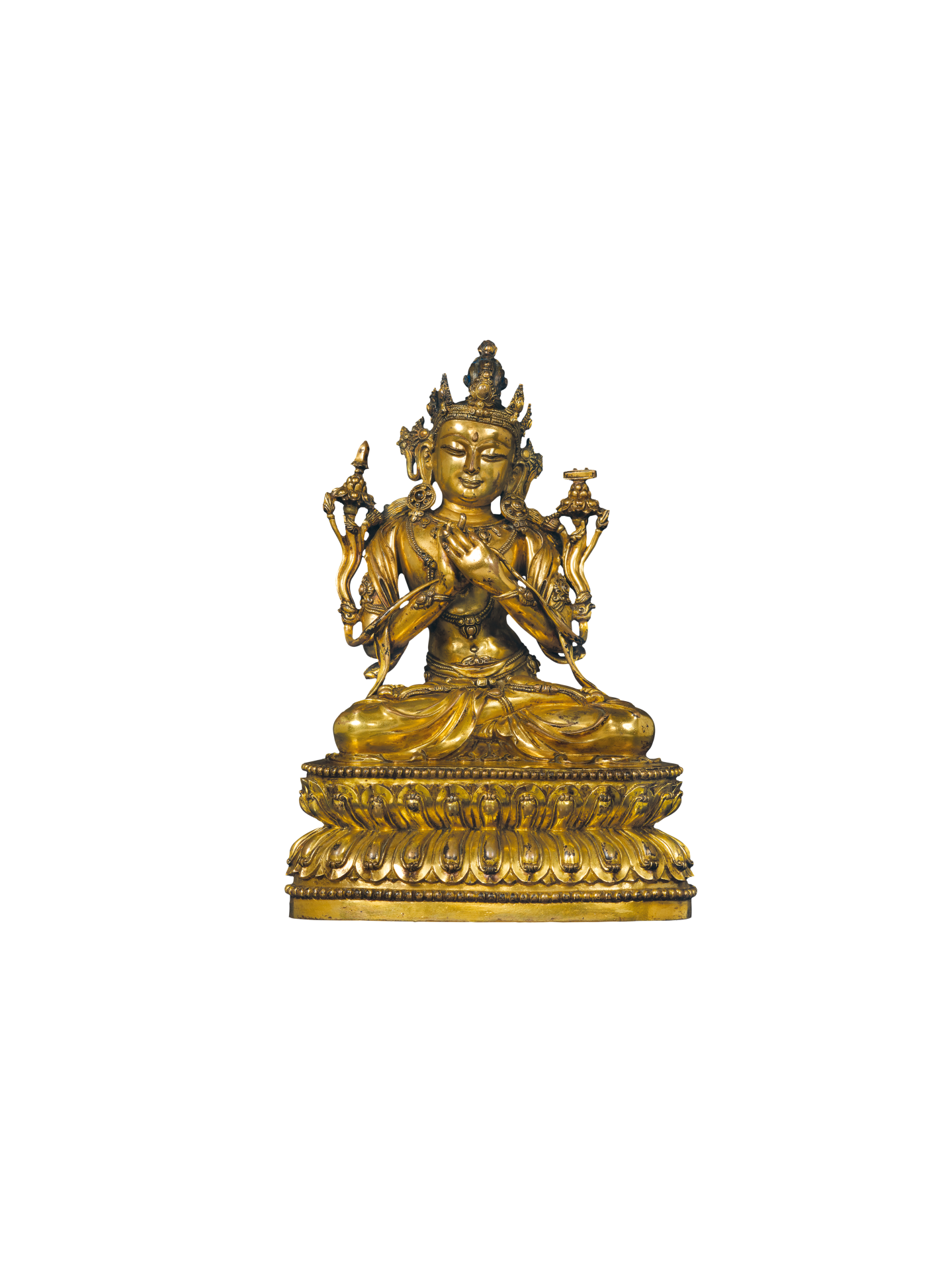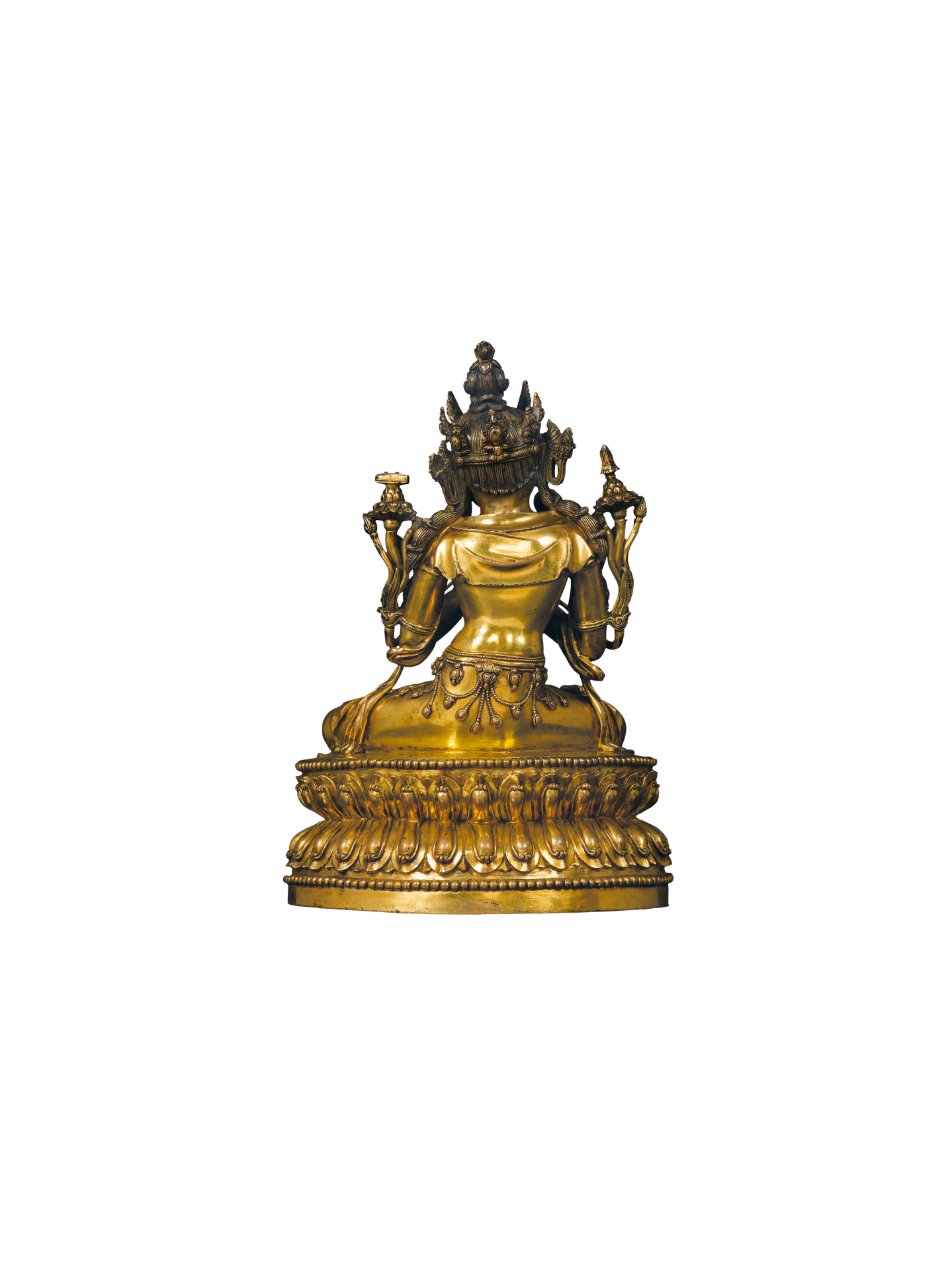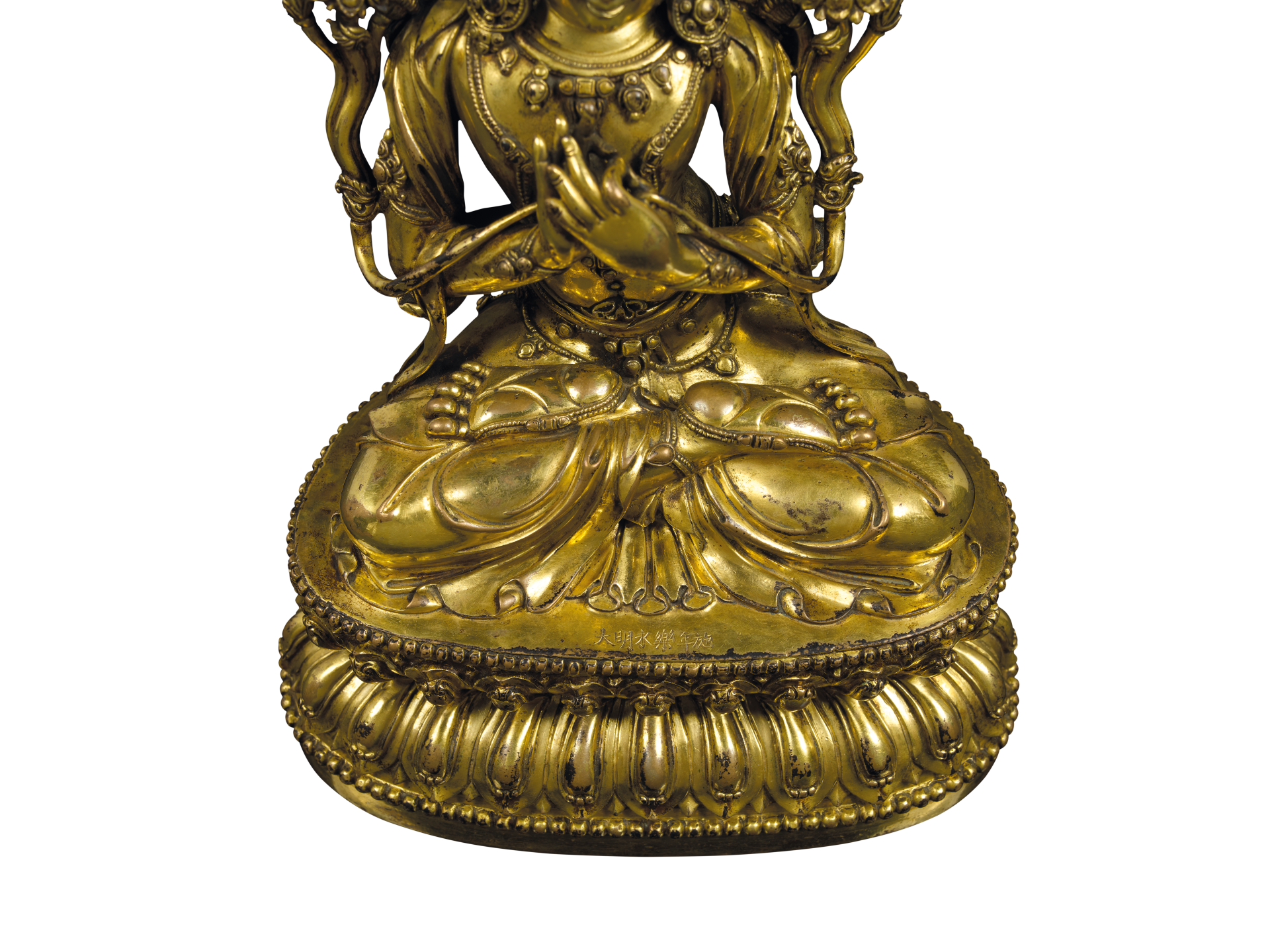Seated Mañjuśrī Bodhisattva
Mañjuśrī is one of the Four Great Bodhisattvas in Buddhism and the symbol of wisdom. His most notable attributes are the sword and a book representing the Prajñāpāramitāsūtra. Śākyamuni Buddha and his acolyte Bodhisattvas Mañjuśrī and Samantabhadra are hailed as the Holy Triad of Avataṃsakal. During the Yongle reign (1403-1424) of the Ming dynasty (1368-1644), large numbers of gilt bronze statuary of Tibetan Buddhist tradition were produced in the imperial workshop. The majority of them bear the six-character reign mark Daming Yongle nian zhi (Made in the Yongle reign of the Great Ming), hence the name ‘Yongle statuary’. The present statue is an example. Since Yongle statuary were intended to be imperial gifts presented to Tibetan high lamas, Tibetan monks were often entrusted with the task of overseeing the production. Tibetan influence is thus evident in their iconography and style. They also share similarities with Tibetan statuary of the same period.
This Mañjuśrī statue has a tall topknot surmounted by a gem; a five-leaf crown and circular pendent ear ornaments. The Bodhisattva has an oblong face with smooth plump cheeks, a water-drop shaped ūrṇā in the middle of the forehead, long narrow downcast eyes with wavy slits, a mouth with lifted outer corners indicating a smile, and a graceful countenance. The two hands in ‘wheel-turning gesture’ (Dharmacakrapravartana mudrā) are each clutching a lotus stalk that rises above the shoulder; the left one supporting the Sword of Wisdom and the right a book representing the Prajñāpāramitāsūtra, symbolising the cutting off of defilement and attachment so as to attain the state of perfect wisdom.
The Bodhisattva’s upper body is bare, apart from the shawl and strings of jewellery. The lower body is wrapped in a long skirt. He is seated with legs locked in ‘lotus posture’ (padmāsana) on a double-lotus pedestal. The slightly swayed body creates a leisure feeling and a sense of motion. Yongle statuary have not only attested to the exchange of Han Chinese and Tibetan cultures during the early Ming dynasty, their superb craftsmanship and exquisite form also demonstrate the peak standard of Buddhist statuary produced by the Ming court.


